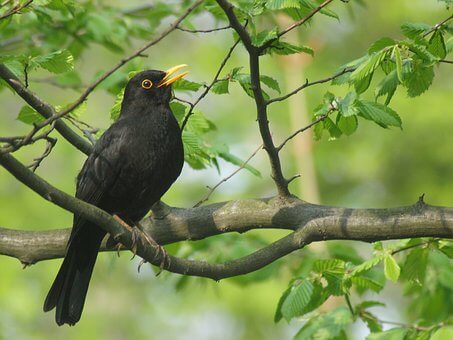
Big Garden Birdwatch Results 2022
Share
The results are in, and some number crunching has been done! A big pat on the back to everyone that took part in this year’s survey.
Taking the lead and retaining its number one spot is the House Sparrow. Incredibly its numbers are down 57.9% since 1979 so this is one garden bird that really needs our help. Try feeding Original Wild Bird Food or Pinhead Oatmeal to give a helping hand to this garden bird favourite.

The Blue Tit has also retained its number two place from last year. This small acrobatic species is easily identified, as it is the only British bird with a blue crown. Blue Tits love hanging from a peanut feeder so by adding one to your garden you are encouraging this gorgeous bird to visit. Mealworms are also a favourite.

Not the best-loved of garden birds the Starling has a reputation as being a bully at the bird table. However, take a close look at the plumage and it really is a stunning bird. Another non-mover the Starling is at number three and is easily satisfied with fat balls and Golden Chorus.

Wood Pigeons have moved up one place this year to the number four spot. Considered a pest by many farmers due to the damage it causes to crops, it will eat almost anything from seed to food scraps. Garden Pheasant Mix and Original Wild Bird Food are the mixes to try should you wish to attract it into your garden.

The Blackbird has slipped down a spot from last year and is now at number five. Although its numbers have dropped 43.3.% since 1979 it is a well-loved garden bird. Blackbirds feed mainly on insects and earthworms during the summer months and fruit and berries during the winter, but Haith’s Huskfree Advance with Dried Mealworms, live foods like waxworms and mealworms and Softbill Food would soon attract this beautiful member of the thrush family into your garden.

Britain’s favourite, the Robin has retained their spot at number six in the rankings. Let’s face it, the Robin would not happily endure being much higher than number six as it would spend most of its day fighting what it would see as territorial lookalike. They love Softfoods, such as Mealworm Crumble, Fat Robin, Golden Chorus and Dried or Live Mealworms.

Another bird with a slight increase is the beautiful Goldfinch which has moved one spot to number seven. Long has the Goldfinch benefitted from being fed Niger seed; however, in more recent years, it’s taken readily to Sunflower Hearts and - as these are even more readily available than Niger seed, Goldfinches are simply beautiful.

The largest Tit in the UK, is the Great Tit and unfortunately they are down one spot to number eight. It can be quite aggressive at the bird table scaring off the smaller birds, but in the winter it joins blue tits and others to look for food in the countryside and gardens. They love insects, seeds and nuts.

The Magpie is a non-mover and its retaining its place at number 9. Magpies are not the best of friends with humans as they are scavengers, predators and pest destroyers, they gather together in flocks.

The Chaffinch has moved slightly to number ten putting it in the top ten this year. The Chaffinch is mostly widespread in Britain and Ireland, but it does not feed from bird feeders and is happy to hop about under hedges and bird tables for food. They love seeds and insects.

Written by Angela and Chris

